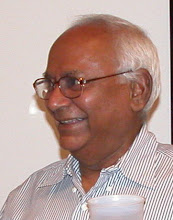In order to understand contemporary India and appreciate its problems, one has to see the realities about India through all the declarations and proclamations made and even perceptions held about it. If we allow ourselves to be carried away by them, we shall continue to be turning away from understanding the real nature of the problems afflicting India and from arriving at their effective solutions. In the previous two posts on the Blog devoted to this theme, the realities about the proclaimed democratic functioning of governance of India, both at the top as well as at the grass roots, were discussed and light was thrown at the illusions of India’s democracy. In this post, realty about India’s sovereignty proclaimed in its Constitution is examined – where does the sovereignty lie and how is it really enacted in India’s governance.
As all the institutions of governance and all the laws under which India is governed flow from its Constitution, clearly the Constitution is supreme. As the people of India have framed the Constitution through their representatives, adopted it and gave it to themselves on 26 November 1949, they are the makers of it and theoretically they have the power to unmake it. Thus, sovereignty of India lies with its people and all the institutions of governance derive their authority ultimately from the sovereign people. The moot point is whether this prime fact is manifested and enacted in the functioning of India’s governance? Hardly so. As indicated in the previous post, the relationship between the ‘sovereign’ people and the public servants in the governance of India is far from reflecting this basic constitutional assertion. The public servants at all levels of free India’s governance structure are perceived and act as masters of ‘sovereign’ people they are supposed to serve. This perception and attitude have been continuing unabated and unaltered from the colonial pre-independence days. And why not? After all, the ‘democratic sovereign republic’ of India chose to adopt the same system of governance which the British colonial masters designed and used to govern over their subjects and administer a colony for its exploitation.
Another glaring fact of India’s governance is that ‘sovereign’ people find themselves powerless in ensuring for themselves even fundamental and vital necessities of life and living, such as potable drinking water, standard primary health care facilities, decent education for their children and law and order essential for peaceful community life. While they pay taxes, directly or indirectly, which entitle them to these basic services, what they get at the hands of the government are generally grossly inadequate and often of downright substandard quality. Being able to do precious little in correcting or even improving this situation, they have no other alternative than either to suffer the consequences, which may sometimes be horrendous, or to be compelled to go to private providers of these services, often at torturous costs for many. The situation has given rise to opportunities for lucrative business in these vital services for private players who not only have a vested interest in these public services remaining unsatisfactory but also insidiously they grow a nexus with powers that be for the purpose. Sometimes, the government satisfies itself by creating and nurturing a limited number of show-piece institutions which cater to the few, often at the cost of many, and mostly for serving the multinational and supranational interests.
Such is the situation of ‘sovereign’ people in the ‘democratic sovereign republic’ of India.
Thursday, July 9, 2009
Subscribe to:
Comments (Atom)
